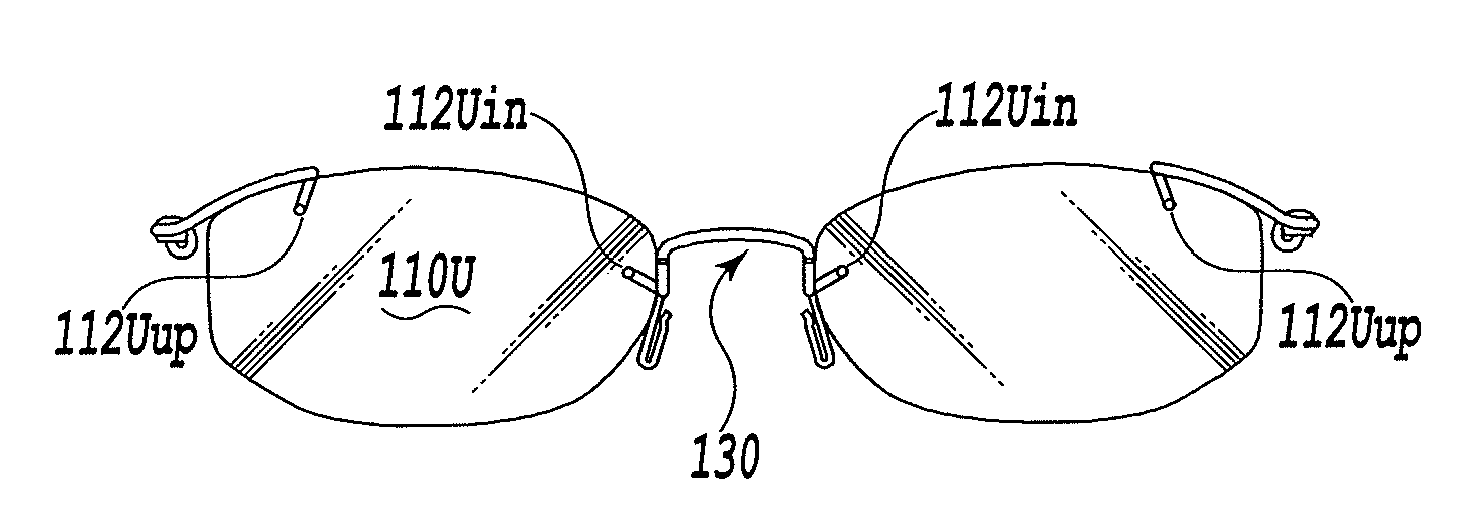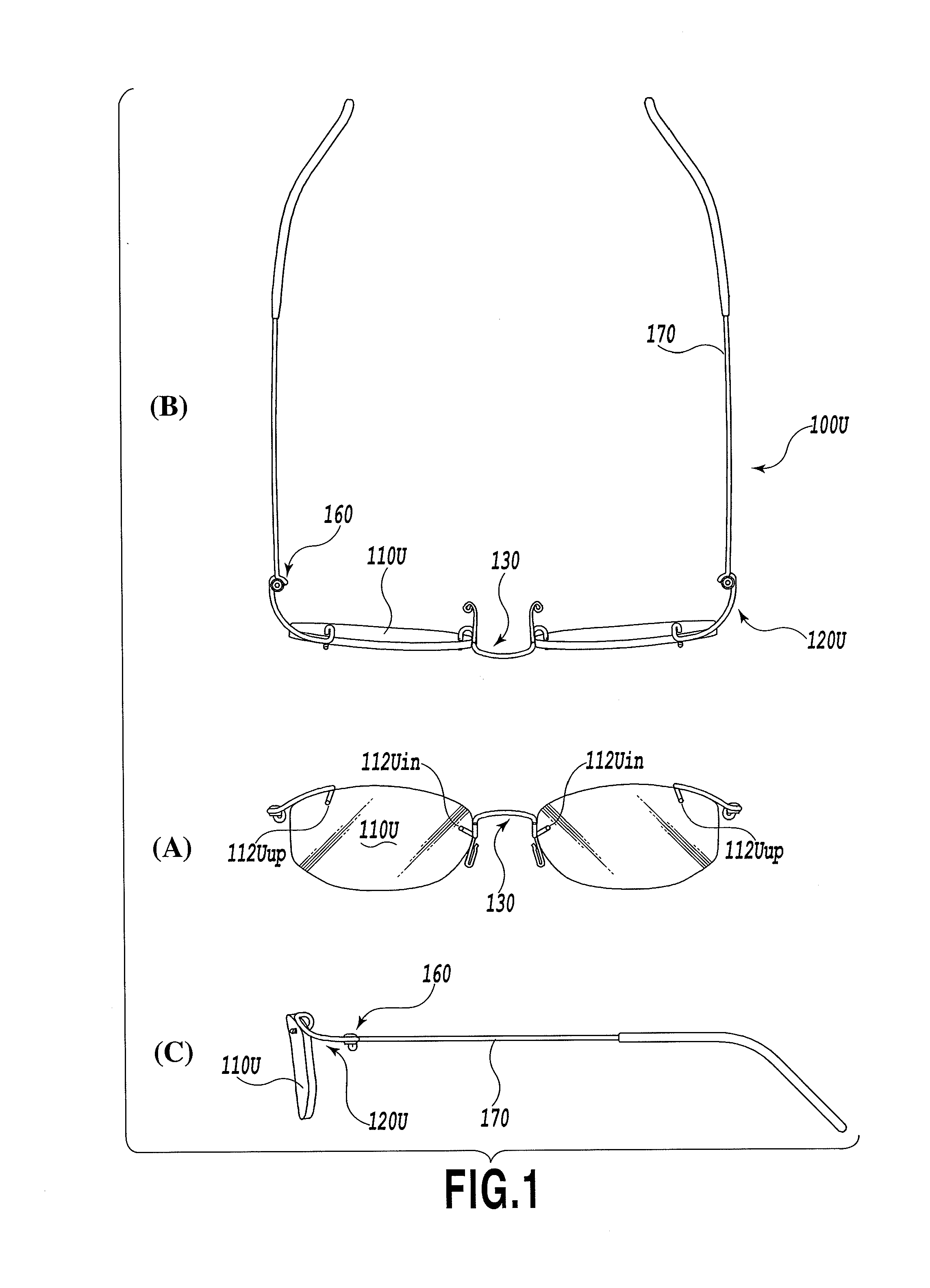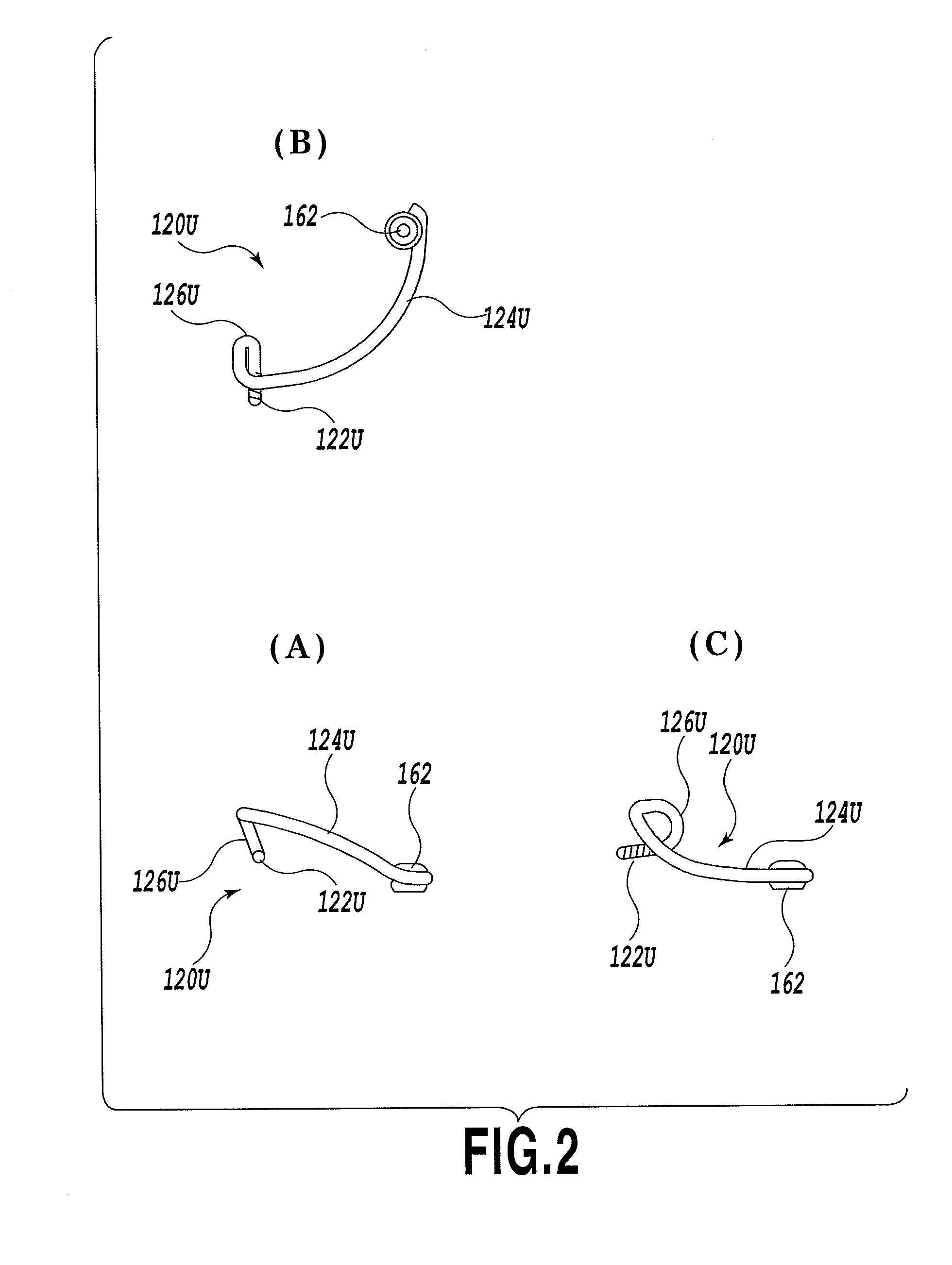Rimless eyeglasses
a technology of eyeglasses and fixing parts, applied in the field of rimless eyeglasses, can solve the problems of looseness produced between the eyeglass lens and the lens fixing member, and difficulty in maintenance operations such as lens replacement, and achieve the effect of weak adhesive force and easy breakag
- Summary
- Abstract
- Description
- Claims
- Application Information
AI Technical Summary
Benefits of technology
Problems solved by technology
Method used
Image
Examples
first embodiment
[0056]In the present invention, the rimless eyeglasses 100U are assembled and completed through the following procedure. First, each of the leg portions 132 of the metallic bridge member 130 is inserted from the back side of the lens 110U into the lens hole 112Uin perforated in the bridge-side portion of the lens 110U, and the leg portion 122U of the metallic end-piece member 120U is inserted from the back side of the lens 110U into the lens hole 112Uup perforated in end-piece-side portion of the lens 110U, in order to fixedly attach both the metallic bridge member 130 and the metallic end-piece member 120U to the lens 110U. It should be noted that, (A) of FIG. 5 shows by way of example how to insert the metallic end-piece member 120U. At this stage, regarding the metallic bridge member 130, the curvature of the U-shaped curved portion 135 and the perforation position of the bridge-side lens hole 112Uin are determined such that the lens hole 112Uin and the inner edge of the lens 110...
second embodiment
[0068]In the second embodiment, also, the outer peripheral faces of the leg portion 122S of the metallic end-piece member 120S and the leg portion 132 of the metallic bridge member 130 respectively have spiral-shaped grooves 128 and 138 formed therein, and flat faces 129 and 139 formed on the area between the turns of the spiral-shaped groove, which have a greater width B than the width A of the groove. Because of this, the inner peripheral face of the lens hole 112S and the outer peripheral face of each of the leg portions 122S and 132 come into approximately uniform contact with each other, and accordingly a fixed attachment between the lens 110S, the metallic end-piece member 120S and the metallic bridge member 130 is reliably established without producing loosening in the connecting areas between them. In addition, since the contact between the inner peripheral face of the lens hole 112S and the outer peripheral face of each of the leg portions 122S and 132 is achieved on the fl...
PUM
 Login to View More
Login to View More Abstract
Description
Claims
Application Information
 Login to View More
Login to View More - R&D
- Intellectual Property
- Life Sciences
- Materials
- Tech Scout
- Unparalleled Data Quality
- Higher Quality Content
- 60% Fewer Hallucinations
Browse by: Latest US Patents, China's latest patents, Technical Efficacy Thesaurus, Application Domain, Technology Topic, Popular Technical Reports.
© 2025 PatSnap. All rights reserved.Legal|Privacy policy|Modern Slavery Act Transparency Statement|Sitemap|About US| Contact US: help@patsnap.com



